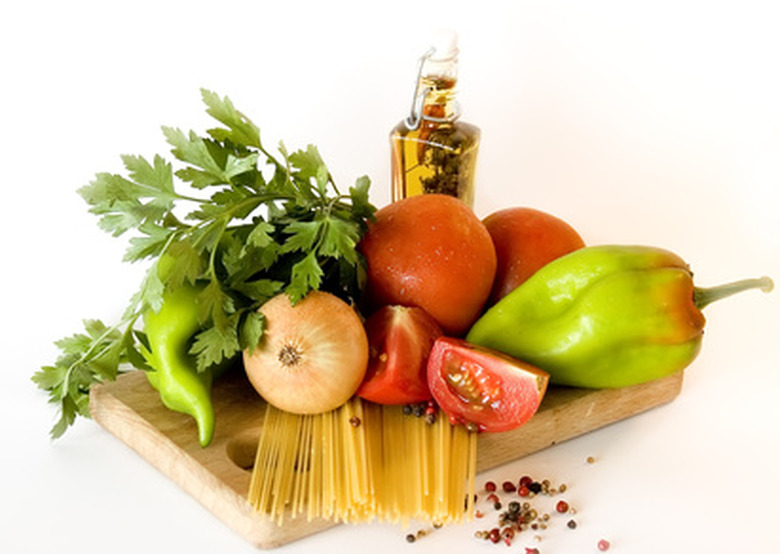How To Grow Vegetables In Zone 10
Things Needed
- Shovel
- Rake
- Wheelbarrow
- Compost
- Vegetable seeds or plants
- Irrigation tubing
- Emitters
- Fertilizer
The U.S. Department of Agriculture's Plant Hardiness Zones divide the country into zones based on the average annual minimum temperature a given area is likely to experience during the year. There are 11 zones. Zone 10 is the second warmest, with average annual minimum temperatures between 30 and 40 degrees. Zone 10 includes the balmy coastal areas of California, the southwest deserts, parts of Texas and Louisiana and the southern part of Florida. In Zone 10, winters are so mild that it is possible to grow vegetables year-round, in three different growing seasons.
Step 1
Make a garden plan for three growing seasons. Zone 10 gardeners can plant a cool season crop in late winter, warm season vegetables in late spring, and then have a second cool season planting in autumn. Determine the days from planting to harvesting for each of the vegetable varieties you want to plant, so one crop can be harvested just at the time the next crop is ready to go into the ground. This way, you make the most efficient use of whatever size garden area you have. Create a chart that shows the dates each vegetable will be planted and harvested.
- The U.S. Department of Agriculture's Plant Hardiness Zones divide the country into zones based on the average annual minimum temperature a given area is likely to experience during the year.
- Determine the days from planting to harvesting for each of the vegetable varieties you want to plant, so one crop can be harvested just at the time the next crop is ready to go into the ground.
Step 2
Prepare the soil. Zone 10 gardens often require soil preparation because the soil does not contain sufficient organic material and may have poor drainage. The alkali soils of the southwest deserts are especially nutrient deficient. Turn the soil to a depth of 12 inches, add two inches of compost and work it into the soil. Another solution is to create a raised bed by bringing in fresh topsoil and placing it over the existing soil.
Step 3
Install the irrigation system. Vegetables need regular watering on a schedule. Install an irrigation system that is operated on a timer rather than depending on using the hose. Over watering can be harmful to plants just as letting them dry out can be. Use a drip irrigation system with emitters or soaker hoses so the water is delivered as close to the plant roots as possible. This method also conserves water.
- Zone 10 gardens often require soil preparation because the soil does not contain sufficient organic material and may have poor drainage.
- Use a drip irrigation system with emitters or soaker hoses so the water is delivered as close to the plant roots as possible.
Step 4
Plant cool season vegetables. Cool season vegetables such as peas, spinach, kale, and chard are planted just after the danger of frost has passed in Zone 10, usually by mid-February. Spinach can be harvested in 40 to 50 days, within plenty of time to prepare for planting the summer crops. If the winter days are unusually cool, place clear plastic sheets in between the vegetable rows to keep the soil warm.
Step 5
Plant spring/summer vegetables. The month of April is the time the summer crops such as corn, peppers, squash, cantaloupe and watermelon are planted. The growing conditions are now ideal, with warm days and still cool nights.
- Plant cool season vegetables.
- Cool season vegetables such as peas, spinach, kale, and chard are planted just after the danger of frost has passed in Zone 10, usually by mid-February.
Step 6
Plant autumn vegetables. Plant the second crop of cool season vegetables when the worst of the summer heat fades in Zone 10 in September and early October. These include peas and beans, loose leaf lettuce, leafy greens such as chard and spinach, and broccoli and cauliflower.
Tip
To get an early start on the autumn crop, start the vegetables in trays or pots that can be kept out of the mid-day sun. Transplant them in October. Keep a log book of which crops were most prolific and which did not grow as fast or produce as much fruit as expected. Adjust your planting schedule for next year accordingly.
Warning
Soil preparation is absolutely vital for vegetable gardening success in Zone 10. Make certain all rocks are removed, and the soil is enriched with compost. Carefully level the garden area before planting so water will not collect around tender young seedlings.
References
- The Desert Gardener's Calendar; George Brookbank; 1999
- Santa Clara California Gardening
